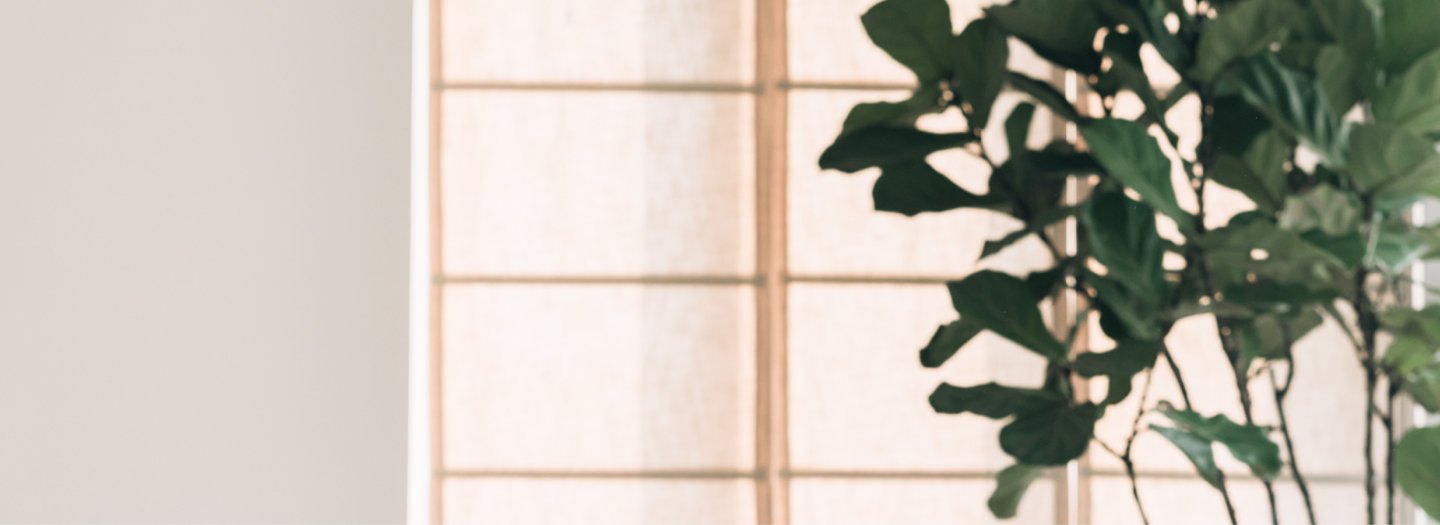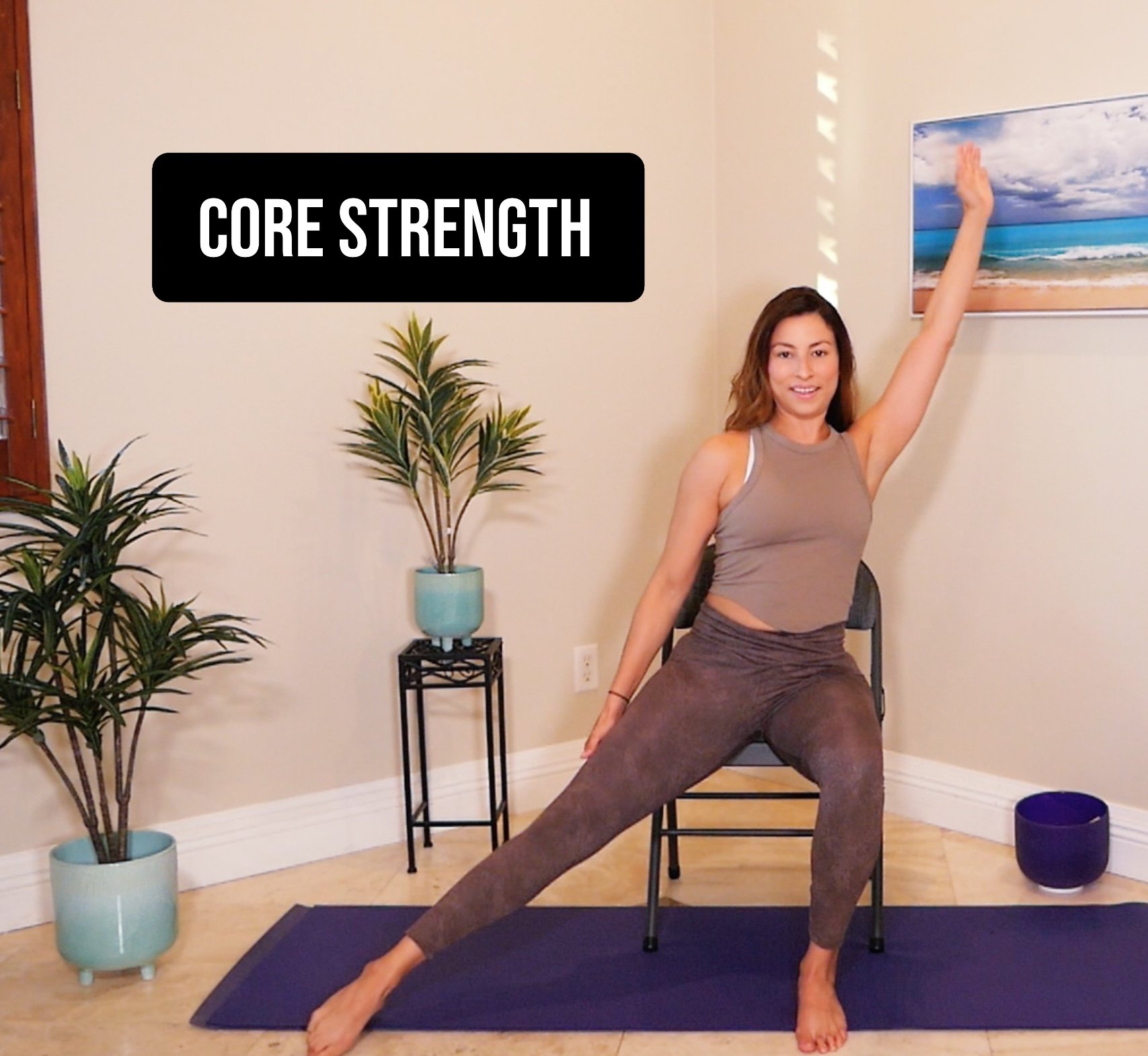



The Warrior Poses refers to a series of powerful standing yoga postures that develop balance, strength, flexibility, and mental focus. These poses are the base of most regular yoga practices and they help strengthen the core and increase flexibility in the hips and hamstrings. In this practice we learn three variants that are performed in a modified version while seated on the chair, as well as standing using the chair for support. Including these poses to your routine will help you gain mental strength, and courage. Warrior poses build strength in the arms, shoulders, thighs, and back. It's named after a fierce warrior, Virabhadra, who symbolizes our ability to overcome ego and ignorance.
You’ll need: Chair and Wate

This is a standing practice where we use the help of the chair for support to practice different balancing exercises. Maintaining balance is crucial especially as we start to get older as it helps in preventing falls, injury, and simply making your daily activities easier to perform. Avoiding falls not only helps you avoid physical damage but it also boosts your confidence, even if you're young. When your balance system is working optimally, you can quickly react to slips, making it less likely that you'll fall.
Balance basically means being able to stay upright and steady, whether you're still or moving and these exercises will help you increase joint stability, improve body and spatial awareness. Balance can be improved at any age and at any starting level. The key is repetition and practice.
You’ll need: Chair and Water

Cardio — also known as aerobic exercise — is a vital component of any exercise regimen. It gets your blood pumping and oxygen flowing, which translates to better health across the body. And studies show that cardiovascular fitness is associated with living a longer life and plays a role in helping you shed pounds by burning calories.
Coordination is the optimal interaction of muscle function, in other words, this practice gives you the ability to execute smooth, accurate, controlled motor responses that are a key complement to your physical activity, as they help to strengthen the neuromuscular system, increase stability and allow for harmonious mobility. Improving your hand-eye coordination is important in everyday tasks such as grasping objects, handwriting, playing games, eating, cooking, and even doing one's hair. As with other body skills, hand-eye coordination can be practiced and improved overtime.
You’ll need: Chair and Water

The core muscles refers to the stomach muscles, sometimes called abs. These muscles have two main functions:
1) to spare the spine from excessive load, and
2) to transfer force from the lower body to the upper body and vice versa.
Having a strong, stable core helps us to prevent injuries and allows us to perform at our best. Core strengthening exercises train the muscles in your stomach to work in harmony. This leads to better balance and steadiness, also called stability. Stability is important whether you're on the playing field or doing regular daily activities.Training your midsection can improve your workout form, stabilize your body, boost your athletic performance, increase everyday agility, and prevent injury.
You’ll need: Chair and Water

The lower body refers to the hips, knees, thighs, legs, ankle joints and feet. Strengthening the muscles in your legs provides a solid base and plays a crucial role in maintaining good balance, stability, and supporting healthy movement patterns in your daily life such as walking, running, climbing stairs, and even standing for extended periods of time. For example, each time you pick an object up from the ground, you perform a deadlift. Every time you sit in your chair, you do a squat. Lower body strength is essential to maintaining these functional movement patterns, increasing your overall health.
You’ll need: Chair and Water

The upper body refers to your arms, forearms, shoulders, chest and hands. These muscles create a bridge from the chest, limbs and torso to your spinal column and this practice will help you build strength and increase muscle mass overtime. Lack of Upper Body strength results in being unable to lift and carry heavy items. As such, it’s important not to exclude upper body strengthening from your regular fitness routine. Strengthening can help improve posture, athletic performance, confidence with everyday tasks, and decreases age-related atrophy.
You’ll need: Chair, Water, and light hand weights 2-5lbs
Substitute hand weights for water bottles or food cans!

This is a practice focused on mobility and conditioning exercises. With them, you can improve your flexibility and joint range of motion, prevent injuries, improve your posture, stay pain free and enhance your overall well-being. Some of these exercises can help prevent and/or reduce arthritis by keeping the muscles around the joints strong, decreasing bone loss and may help control joint swelling.
Regular activity replenishes lubrication to the cartilage of the joint and reduces stiffness and pain. These are all the necessary features to keep you moving, maintaining your body healthy, and are great additions to your routine.
You’ll need: Chair and water

This is a practice focused on deep breathing, and deep stretching exercises to release tightness and tension in your body. This practice will help you improve mobility and flexibility, improve your performance in physical activities, and decrease your risk of injuries. Stretching your muscles will activate your parasympathetic nervous system. This activation results in an increase of blood flow and endorphins, leaving you with a feeling of calmness, relaxation, less pain, and soreness overtime. Your body will thank you for it!
You’ll need: Chair and water